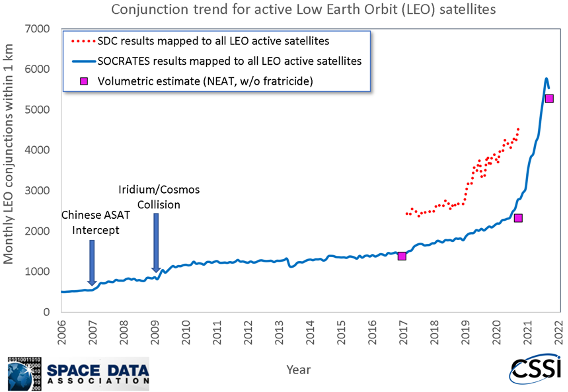In this statistical study conducted by Dan Oltrogge (SDC Project Manager), Pascal Wauthier (SDA Chairman) et al, historical data collected by SDC and SOCRATES were analyzed to characterize increases in the rate of close approaches in LEO.
While the SDC and SOCRATES databases have sampling limitations in terms of altitude and population representativeness, they are a good source for such research since they keep data for several years. Also, the SDC contains orbital data provided by spacecraft operators and normalized by the SDC system and as such has data that is realistic and reliable.
The authors also employed COMSPOC’s Number of Encounter Analysis Tool (NEAT) to compute a long-term probability of encounter in LEO. All data were normalized to 1 km proximity and numbers of encounter per month.
In doing so, they found that in 2017 SOCRATES and SDC archived data maps to approximately 1400 and 2400 close approaches below 1 km per month, respectively. In contrast, these systems indicate in 2021 there may be as many as 6000 close approaches for the same criteria. The situation may be even more critical in regions where large constellations such as Starlink reside.

This study demonstrates the importance of having a more robust SSA system that works to collaboratively fuse data to guarantee realistic and reliable close approach predictions and information to properly assess critical situations.
See more details here

